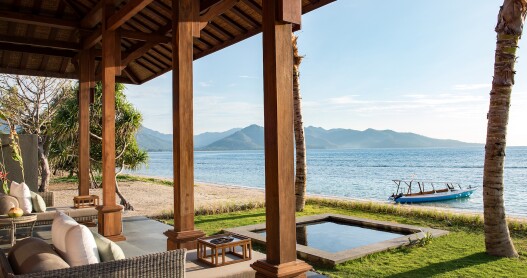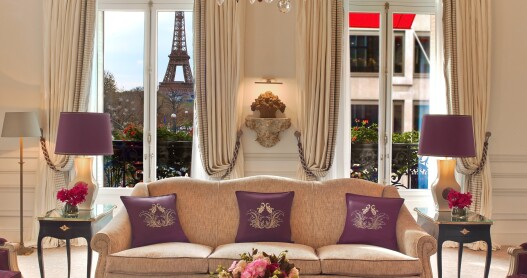Overview
When’s the best time to go to Copenhagen?
Definitely summer. Not only are the days longer—the sun won’t set until close to 11 p.m.—but warmer temperatures and sunnier weather turn the city into a party as Copenhageners spill out in droves to eat lunch in outdoor cafés, watch movies in the park, and drink wine on the city’s many quays. That said, winter has its own charms, whether it’s drinking hot glögg at one of the many Christmas markets or exercising one’s inner Viking by bathing in the frigid harbor.
How to get around Copenhagen
Copenhagen is one of the most bike-friendly cities in the world (everything, from the timed traffic lights to the angled curbside trash cans, is built accordingly), and cycling is without a doubt the most convenient way to get around town. The city’s historic core is very walkable, and a leisurely stroll is a great way to see Copenhagen. Interconnected subways, buses, and S-trains use a common fare structure, and the subway is automated and runs regularly through the night. There’s no Uber, but between bikes and the all-night metro system, you shouldn’t need one.
Can’t miss things to do in Copenhagen
Bordered by two lovely parks, the area between Kongens Have and Kastellet is one of the city’s most adorable, with long, ochre-colored rows of houses, some excellent cafés, and two small museums—the David Collection (a selection of Islamic, Danish, and European art) and the Museum of the Resistance (which traces the Dutch response to the Nazis)—that deserve more attention than they get.
Cemeteries here double as parks, and Assistens Kirkegård, in the center of Nørrebro, is an especially nice place for a stroll or picnic (as well as for checking out the graves of its two most famous residents: H.C. Andersen and Søren Kierkegaard).
Refshaleøen, once home to the city’s shipyards, today embodies some of the best the city has to offer: including the green-energy power plant, dubbed Copenhill, that also serves as a ski slope and climbing wall; the dockside natural wine bar La Banchina; the laid-back Copenhagen Contemporary art museum; and the seasonal (spring through fall) outdoor street food market, Reffen.
About half an hour by train from Copenhagen, Roskilde is home to one of Europe’s great music festivals (June 25–July 2, 2022)—a rite of passage for nearly every young Dane. But Distortion, held a few weeks earlier (June 1–5, 2022), takes place right in the heart of the capital. The acts may not be quite as well known, but the urban setting adds its own energy.
Food and drink to try in Copenhagen
Getting a table at Noma, or Copenhagen’s other top-ranked restaurants, Geranium and Alchemist, takes considerable advance work and more than a little luck. Keep an eye on their Instagram accounts for news of when they open reservations (usually a few months in advance) and any last-minute cancellations.
Smørrebrød, the open-faced sandwich that is Denmark’s primary culinary invention, is only eaten at lunch in restaurants. Order two or three pieces, starting with fish (especially herring) and/or vegetables, before moving to chicken, pork, or beef. Akvavit, a distilled liquor, is the traditional accompaniment, though you can get away with beer if you don’t want to have to take the rest of the day off.
Danes are pastry-loving people. The buttery cinnamon and cardamom buns that scent the city are outstanding, but for something more uniquely Danish, try tebirkes (a marzipan-filled pastry topped with poppy seeds), the iced jam-filled cookies called hindbaersnitte, or the brown-sugar topped cake brunsviger.
Culture in Copenhagen
Look closely enough, and you’ll see that Copenhagen’s appeal rests on a split personality. On the one hand, there’s all that traditional Danish stuff: the cute houses and cobblestone streets of the historic center; an embrace of nature that probably dates back to the Vikings; and a degree of hygge conformity that manifests in a love of candles and oversized scarves. But thanks to immigration in the past few decades, the city is far more diverse than many other Nordic capitals. That vibrancy is especially palpable in Nørrebro, where shawarma joints push up against craft breweries, and in Vesterbro, where avant-garde galleries and 3rd (or is it 12th?)-wave coffee roasters share the streets with Asian and American (North and South) restaurants.
Danes take their festivals seriously, and with a multitude of parks and open spaces, the city’s design encourages people to mingle. Copenhagen has fantastic summer and winter jazz festivals as well as a citywide opera festival. Other key music events include the iconic Roskilde Festival, the heavy metal festival Copenhell, and Distortion—a sprawling music fest and street party that rotates through several neighborhoods. Non-music options include Copenhagen Cooking, Pride, and numerous film festivals including CPH:DOX and CPH:PIX.
Local travel tips for Copenhagen
Instead of joining the big open-air boats that offer city tours by water, locals take a DIY approach, renting a small GoBoat, stocking it with wine and snacks, and sailing themselves through the city’s canals and harbor.
Copenhageners take traffic laws seriously, regardless of the means of transportation. Expect a scolding if you fail to signal before stopping on your bike, or if you walk across the street against the light.
Local tip: Frederiksberg Have, the lush gardens north and west of Vesterbro, back directly onto the city zoo and offer free viewing of the elephant enclosure.
Yes, they bike in the rain and cold. As any Scandinavian will tell you, there’s no such thing as bad weather, only bad clothing
Practical Information
Travelers to Denmark are required to have a passport that is valid at least 6 months past the time of their departure. Electric plugs are types E and K, so travelers from the U.S. and Canada will need an adapter. The current is 230V, so appliances such as hairdryers will require a converter. Denmark’s official currency is the krone; even so, the euro is widely accepted, especially in the larger cities (though they aren’t required to do so). The official language is Danish, but nearly 90 percent of the population are fluent in English; German is widely spoken, too.











